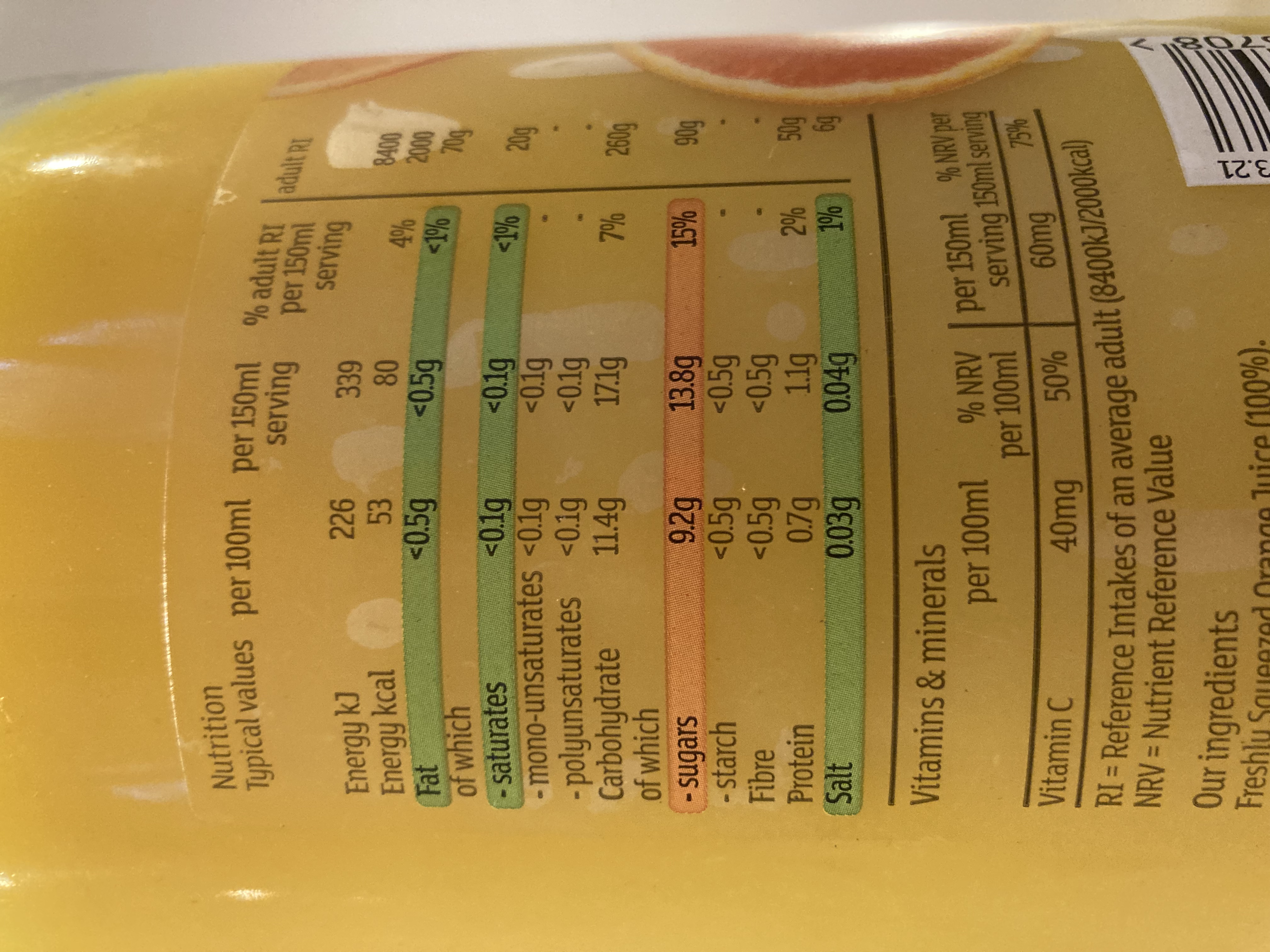5.1 – Energy in a domestic context – food
![]() Allow about 10 mins
Allow about 10 mins
 “Food gives us energy” is something students hear from an early age. Energy and food links nicely with the biology curriculum since it is a chemical store of energy which is released through respiration, either aerobic (involving oxygen) or anaerobic (without
oxygen).
“Food gives us energy” is something students hear from an early age. Energy and food links nicely with the biology curriculum since it is a chemical store of energy which is released through respiration, either aerobic (involving oxygen) or anaerobic (without
oxygen).
To understand energy labels on the food we buy, it helps to understand how the values were calculated. Energy stored in different food components (protein, fat etc) was originally calculated by burning a sample of food inside a sealed container (bomb calorimeter) and measuring the temperature rise of water surrounding the container. Students often do a similar experiment by measuring the temperature rise of a water in a test tube, held above a sample of food while it burns. There are many sources of uncertainty but it is another cross-curricular link as this experiment introduces specific heat capacity.
Pupils will have seen many food labels, and it’s useful to save up a stock of these to use in lessons. By law, UK food labels state energy in kJ (kilojoules) and in kcal(kilocalories).
- The kilocalorie is not an SI unit. It is the energy needed to raise the temperature of of water by .
- The energy value on food labels has been calculated by manufacturers who calculate the energy stored in different components of the food (protein, fat etc), and add these values together. The original values from direct calorimeter readings have been updated to give a clearer idea of the energy that can be accessed through respiration.
The average values used to calculate energy in food labels is:
|
Food |
|
|
|
Fat |
37 |
9 |
|
Protein |
17 |
4 |
|
Carbohydrate |
17 |
4 |
|
Alcohol (ethanol) |
29 |
7 |
For example, a Mars bar includes fat, carbohydrate, protein. The energy content comes from the energy stored in the fat, the carbohydrate and the sugars.
- Energy stored in fat:
- Energy stored in protein:
- Energy stored in carbohydrate:
Calculated total: (close to the manufacturer’s calculated value of )
This is a straightforward calculation for pupils to try with different food labels.
Energy requirements
The daily energy requirements for an adolescent and adult are, on average, . This varies according to factors such as size, age and activity level.
Pupils could compare this daily energy requirement to the energy stored in different foods.
Our Mars bar provides about 8% of the daily energy intake for an adult.
Pupils can calculate the energy needed for certain activities and compare this with the energy supplied by different food stuffs.
For example, the energy required for a person to climb upstairs can be simplified to their gain in gravitational potential energy.
How much of a Mars Bar’s energy does this represent?
So, would you have to climb 200 flights of stairs to burn off that delicious Mars Bar’s energy? Luckily, it’s not quite as bad as that, as we are not 100% efficient machines… but it’s still a lot of flights of stairs. It is often simpler to ignore efficiency calculations or energy used for basic functions of survival, but these can be included for students who understand the concepts securely.
Pupils can also calculate daily energy requirements if they know the approximate power (rate of using energy) for certain activities. An online calculator can allows you to adjust for age, gender weight and height, then input hours spend by activity over 24 hours. For example: https://www.health-calc.com/diet/energy-expenditure-advanced
Food and the environment
You may want to let students research and debate the impact of food choices on global warming:
- It is estimated that about a third of man-made greenhouse gas emissions are generated by food systems, with over half of this is generated from animal-based foods like meat.
- Unpackaged, locally produced food in season has the lowest carbon footprint, and lowest impact on climate change. The impact will also be lower if non-local food is transported by ship and in season when and where it was produced.
- Food wastage occurs at all stages of the food supply chain. Some sources estimate this accounts for more greenhouse gas emissions than all commercial flights each year.
- Some energy requirements are not immediately obvious, for example processing foods, transporting food, storing food, and cooking food.
5 – Introduction: fuels and energy usage
